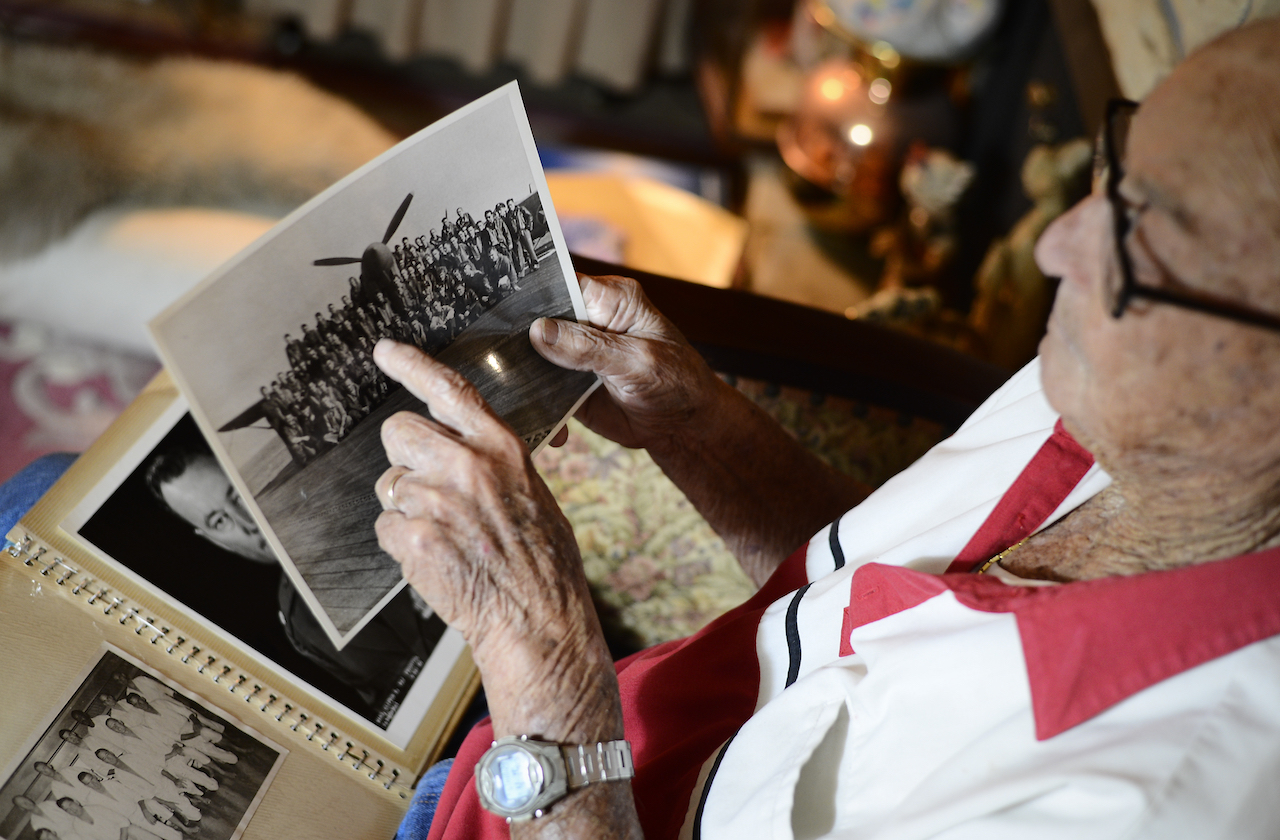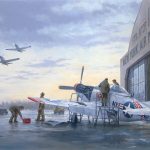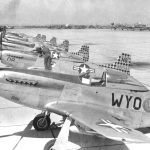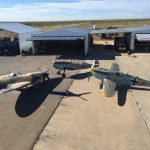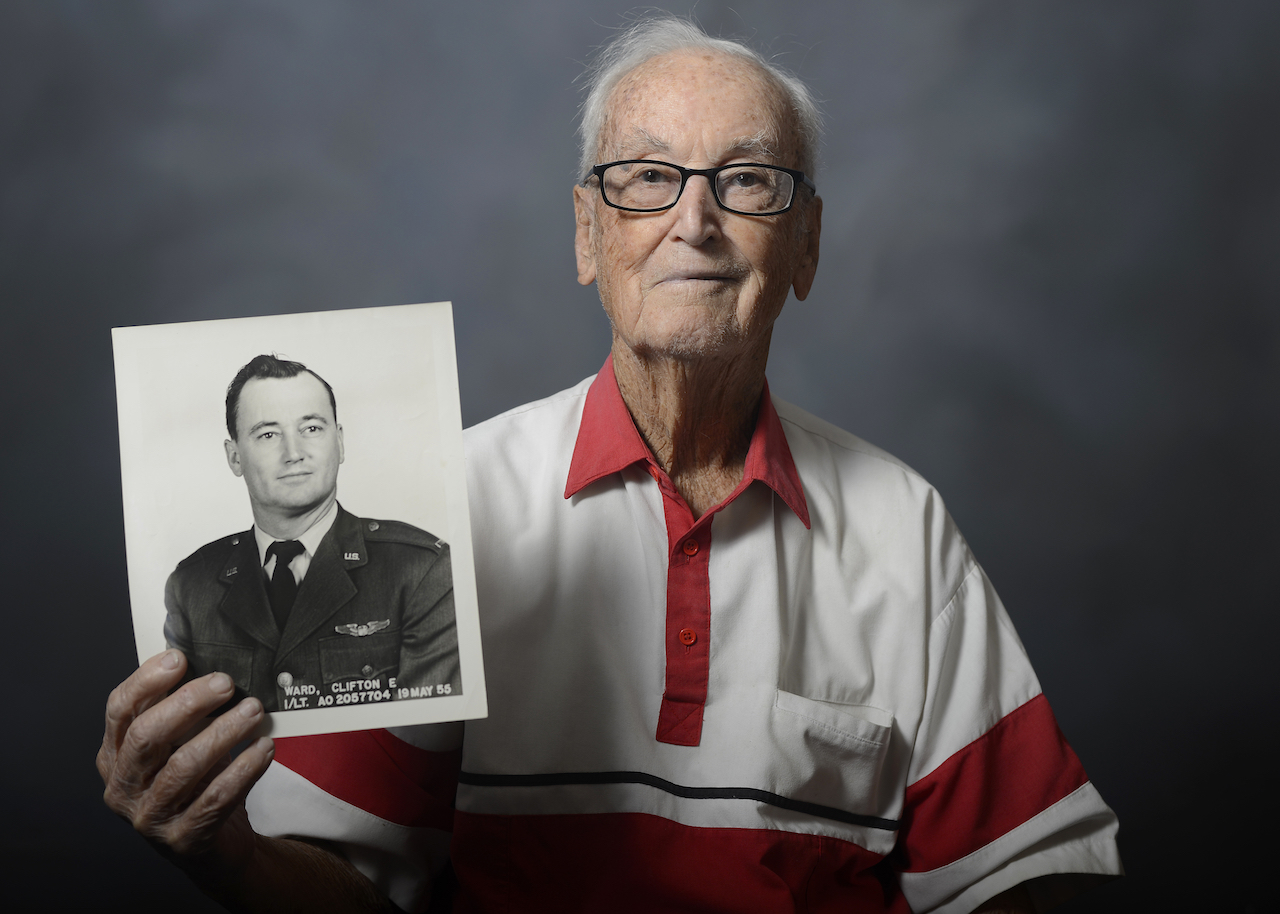
From an original of Story by Tech. Sgt. Brandon Shapiro (DVIDS) – For the millions of people who marveled over the Mel Gibson movie “We Were Soldiers,” none can forget Basil Plumley … the highly decorated command sergeant major with the distinguished accomplishment of fighting in World War II, Korea and Vietnam.Remarkably, and as rare as it is, nestled in the heart of downtown Tampa, Florida, lives an energetic 93-year “young” gentleman who shares a similar story.Clifton Ward grew up on a one horse tobacco farm in Williamston, North Carolina, which was sharecropped by his father. And, as many farm children did in that era, he helped levy the burden of the family’s chores.When Ward was in his late teens he was put in charge of the field plowing operations. During that time he learned something far different than the importance of soil preparation and crop rotation … it was that he wanted to fly. This would be a defining point of his life.”Every day when I traveled out to the field to plow I noticed the local airliners flying by–I kept watching them things over and over,” said Ward. “Soon after, I went to my mother and told her ‘I want to be a pilot.'”
The year was 1943, and with a full understanding of the United States’ current devotion to the war efforts, Ward wasted no time and went straight to the state capitol to take the Pilot Training Qualification Test. Three weeks later, he received his orders from the Army Air Corps and was shipped off to Miami to begin training.”It was my first time outside of North Carolina,” said Ward. “I didn’t care where I was going, I was just so excited to be in … I was ready.”After training on the Fairchild PT-19, the Curtiss P-40 Warhawk, and eventually the Republic P-47 Thunderbolt, Ward, assigned to Abilene Army Air Base, Texas, finally received his overseas orders to aid in the war.”We finally got the orders and were shipped overseas on a C-54 (Douglas C-54 Skymaster),” said Ward. “Our instructions had us traveling to Northern India, to a very crude base with a single steel mat runway and bamboo hut living quarters.” From his decollate outpost, Ward continuously flew his P-47 into Burma around the Mandalay area, conducting railroad sweeps and bombing missions to thwart the remaining Japanese. Later, in 1945, his efforts turned to the assistance of Ho Chi Minh and his pursuit of Vietnam’s independence from Japan.
After the War ended in 1945 Ward took a break in service to help out on the family farm and in doing so he met his wife and they had two children. Then in 1953 he received a call from the recently established Air Force asking for him to join their ranks.Now in the Air Force and with the Korean War in full swing, Ward was soon tasked to fly the De Havilland U-6/L-20 Beaver in support of the American efforts. However, the war ended before Ward ever flew missions in Korea, but his career was far from over.”After Korea ended, I was sent to helicopter school in San Marcos (San Marcos Army Air Field, Texas) where they had H-5s (Sikorsky H-5), H-13s (Bell H-13 Sioux) and H-19s (Sikorsky H-19 Chickasaw),” said Ward. “This is the point in my career when I transitioned from fighters to helicopters.”
From 1953 through 1966, Ward served in numerous positions and flew missions all over the world. During this time he was assigned as a helicopter pilot at MacDill Air Force Base, Florida, however, to his dismay the base did not have any assigned. Instead he was positioned as one of four base operations officers, as well as the lead instructor at the wing’s instrument school.
Then, in 1966, Ward received his third set of war orders, this time to aid South Vietnam in its fight against North Vietnam and their Communist-controlled areas in the South”I didn’t even consider the thought of it being my third set of war orders,” Ward said. “I just wanted to do my job … I loved to fly, I never lost my desire.”With orders in hand, Ward’s first stop was at a survival school in Washington, followed by jungle capture and evasion training in the Philippines. Upon completion he was immediately sent to Saigon and attached to the 20th Special Operations Squadron which had three Sikorsky CH-3s.”My big mission was supporting the special forces up in Central Vietnam at a little strip next to Laos,” said Ward. “I would fly around the SFs and they would tell me where in Laos they wanted to be dropped off so they could survey the traffic of supplies between the two countries.”
After flying more than 200 war missions and earning numerous accolades, Ward returned to the states in 1967. His new assignment was to run the helicopter school in Wichita Falls, Texas. Two years later, and after 29 years of service, Lt. Col. Clifton E. Ward retired.”It was certainly an interesting career for a farm boy from North Carolina,” laughed Ward. Especially for one who didn’t go to college and was told he could never be a pilot.”
—
During Ward’s illustrious flying career he piloted 29 aircraft, was reported missing in action, and earned the Distinguished Flying Cross, the Bronze Star Medal, and an Air Medal for his actions in WWII and Vietnam.
This work, Small town tobacco farmer flies 29 aircraft, serves in both WWII and Vietnam, by TSgt Brandon Shapiro, identified by DVIDS, is free of known copyright restrictions under U.S. copyright law.








